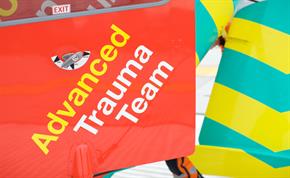
An innovative approach to managing adverse incidents in the aviation world is being adopted by ambulance services to help deal with traumatic incidents.
Crew Resource Management (CRM) is the effective utilisation of all available resources, (e.g. crews, systems and support facilities) to achieve a safe and efficient operation. It also encompasses elements such as fatigue, stress, error management, information processing and conflict.
It was developed by the aviation industry when investigating adverse incidents and the key elements can really help you to manage your patient who has been involved in a trauma incident:
Situational awareness (SA)
In its basic form SA is the ability to keep track of everything that is going on, and will be going on around you. This is especially important for the lead in any clinical scenario whereby they need to have a grasp of every aspect of the situation but not all the details. Having good SA means knowing where you are and the effects it’s having on the task at hand; how the situation is progressing and what needs to be done; what is going to happen next and measures needed to be put in place to deal with it.
Workload
We can’t do it all ourselves! Even the most experienced and skilled clinician needs to recognise that too much workload will soon become detrimental to clinical care. Delegation is key. When in a major trauma situation, the effective delegation of roles is vital and will assist SA knowing who is doing what. Within that comes knowing the best person to delegate tasks to, to best fit skill mix on scene in order not to give too much workload to any one person.
Decision making
Simply the process of making up your mind to pursue a course of action. Recognition of the barriers of good decision making will ultimately assist in ensuring good decisions are made. Barriers such as time, inaccurate data, pressure to perform, rank difference and personal attitudes can all affect good decisions.
Communication
The use of simple language and non-medical jargon can ensure complete understanding on scene. Ask for feedback and confirmation when instructions are given. Recognition of barriers that affect communication need to be addressed. By simply ensuring that there is clear leadership, enough space and all possible noise disruptions are minimised can make a pressured trauma scenario run a lot more smoothly because it is easier to communicate with all on scene.
Effective clinical management should take into account the entire situation; utilising staff at hand to the best of their abilities, divide workload efficiently and communicate the plan to all on scene, ensuring you have been heard.
Published 29th May 2015